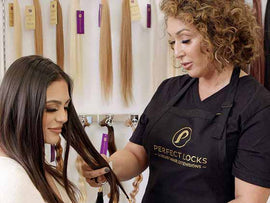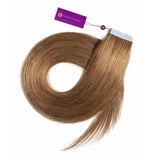 The reason most of us go to a hair stylist is to either have them style our hair, color our hair, or trim our hair. But sometimes saving money, especially during the holidays, seems a lot more appealing. The reality is that hair can be expensive, especially more for women. When your hair is damaged you know the solution is to get a hair cut or trim, but the last thing you want to do is spend a ton of money. By the end of this article, you'll learn on how to cut split ends on your own!
The reason most of us go to a hair stylist is to either have them style our hair, color our hair, or trim our hair. But sometimes saving money, especially during the holidays, seems a lot more appealing. The reality is that hair can be expensive, especially more for women. When your hair is damaged you know the solution is to get a hair cut or trim, but the last thing you want to do is spend a ton of money. By the end of this article, you'll learn on how to cut split ends on your own!
No one likes damaged hair, especially if your hair is looking rather unappealing at the ends. The symptoms of split ends is the following: your hair breaks easily, you have a bad case of the "frizzies", split ends, your hair has lost its shine or luster, and your hair has rough spots or feels rough all over.
If you are experiencing these symptoms and your damaged hair is annoying you, it's probably really hard to style your hair because you're not pleased with it. You wish you could make an appointment but you're afraid that you'll get sucked into a highlight and complete style. Then the ending price will end up being a whopping $100 or more.
The good news is that we have a solution to your dilemma if you want to cut back on the costs.
Did you know that with a little bit of practice you can cut your own split ends?

Easy Steps to Trim Split Ends For Beginners
1. Purchase a pair of hair shears. You can find them at a local beauty supply store or online. Do not use normal scissors because you will damage your hair even more.
2. Cut perpendicular to the hair strand. This will keep the end of your hairs stronger than a slanted cut would.
3. Make the cut about 1/4” above the split ends to create healthy ends again.
4. Trim your hair against a light background if you have dark hair and a light background if you have light colored hair.
What Causes Split Ends?
Numerous factors, such as excessive use of heat styling tools like flat irons, curling irons, and blow dryers, can result in split ends because they deplete the hair's natural moisture, making it more prone to breakage and split ends.
Chemical treatments like coloring and bleaching can weaken the hair structure, leading to the loss of cuticle protection. Also, washing the hair too frequently or using harsh shampoos that strip away natural oils can leave the hair dry and more prone to split ends. But this is not the end; there are some things you can do to prevent split ends.
How to Prevent Split Ends
Preventing split ends involves following good hair care practices and reducing factors that contribute to hair damage. Schedule regular trims every 6–8 weeks to remove any existing split ends and prevent them from traveling up the hair shaft.
Be gentle when handling your hair, especially when it's wet, as it is more prone to breakage. Minimize the use of heat styling tools such as flat irons, curling irons, and blow dryers. If you must use them, apply a heat protectant spray to minimize damage.
Reduce the frequency of chemical treatments like perming, relaxing, and coloring, as these processes can weaken the hair structure and lead to split ends. Use hair care products that are suitable for your hair type. Choose shampoos and conditioners that hydrate and strengthen your hair.
The Importance of Trimming Split Ends
- Regular trims help prevent the splitting from progressing, keeping your hair healthier.
- Trimming removes damaged, weakened, or frayed ends, allowing your hair to maintain its strength and integrity. This promotes overall hair health and reduces the risk of breakage.
- Split ends can lead to tangling and knots in the hair, making it more difficult to manage, and trimming helps minimize tangling, allowing for smoother combing and styling.
- Regular trims can actually help preserve your hair length in the long run. By preventing split ends, you reduce the need for more significant cuts later on.
- While trimming doesn't directly promote hair growth, it creates a healthier environment for the hair to grow.
- Split ends can make the hair appear dull and lifeless. Regular trims maintain the hair's natural shine, giving it a healthier and more vibrant look.
Conclusion
By following these steps, you can carefully cut split ends on your own, even if you are a beginner. Practice makes perfect, so don't be afraid of mistakes. Now that you have successfully learned how to trim your hair, don't worry about the split ends. Save some money and go shopping instead!
















